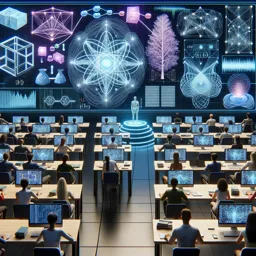What is Computer Vision?
Computer vision is a subfield of artificial intelligence that empowers computers to interpret and process visual information from the world, much like the human eye and brain do. By analyzing digital images or videos, computer vision aims to extract meaningful data, identify objects, and make decisions based on what it “sees.” This technology drives innovation across healthcare, automotive, entertainment, security, and more.
How Does Computer Vision Work?
Computer vision combines mathematics, machine learning, and computer science to enable machines to interpret images through several key steps:
- Image Acquisition: Capturing images via cameras or sensors.
- Preprocessing: Enhancing images by filtering noise or adjusting brightness.
- Feature Extraction: Identifying important details such as edges, shapes, or colors.
- Analysis: Applying algorithms to classify objects, detect patterns, or estimate positions.
- Decision Making: Generating output or triggering actions based on analysis.
Key Applications of Computer Vision
- Medical Imaging: Assists doctors in interpreting MRI scans, X-rays, and detecting diseases like cancer.
- Autonomous Vehicles: Enables self-driving cars to recognize lanes, pedestrians, and traffic signs.
- Surveillance: Supports real-time monitoring and facial recognition for security.
- Retail: Powers cashier-less stores and personalized shopping experiences.
- Manufacturing: Conducts quality control inspections and defect detection.
Challenges in Computer Vision
Despite rapid progress, challenges remain, including handling variations in lighting and perspective, understanding context to distinguish similar objects, and efficiently processing large data volumes. Ongoing research addresses these hurdles, expanding the technology’s potential.
Future Prospects
Computer vision is set to become even more sophisticated, fueling advances in virtual reality, augmented reality, environmental monitoring, and beyond. Its synergy with other AI technologies will continue enhancing its impact, making it a vital tool across industries.

































